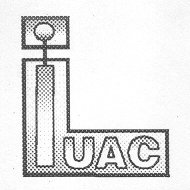|
 |

Research
For the study of nuclear spectroscopy, the emphasis has mainly been on the study
of high spin structure of vibrational nuclei and nuclei near shell closure. The
systematics of high spin levels in nuclei in the mass region ~ 75, ~ 90,
~ 120, ~ 130 and ~ 160 have been carried out in the last few years
to investigate the interplay of single particle, vibrational and rotational
degrees of freedom and the co-existence of these structures.
A systematic study of nuclei near N=50 shell closure was carried out to
understand the evolution of high spin structure in these nuclei. In contrast to
nuclei near Z=50 shell closure, measurements in 92,93,94,95Tc,
95,96,97,98Ru and 95Rh indicate that these nuclei do not
develop any rotational behaviour at high spin. The low lying levels of these
nuclei are well described in terms of large basis shell model calculations using
the f-p-g valency nucleons. These calculations have been extended by
incorporating proton and neutron core excitation in a truncated model space.
Calculations indicate that the levels up to J ~ 22 ħ and E*
~ 10 MeV can be attributed to the breaking of the N=50 core. Similar effects
of core breaking for N=82 shell has been observed for the nucleus
149Dy. In contrast to N ~ 50 nuclei where the high spin structure
is single particle in nature, the Z=50 nucleus 111Sn shows a
rotational band at high spin. The transitional nuclei 99Rh and
100Pd have been observed to have a well-defined rotational
behaviour.
An extensive measurement of the transitional nuclei near A ~ 120 has been
carried out using the GDA facility. High spin structures of the nuclei
120X, 116,118,119,121Te and 118,120I have
been established. A systematic study of Te isotopes indicated the fully
aligned P[(g9/2)2]6+N[(h11/2)2]10+
non-collective oblate configuration in 116,118Te.
The high spin structures of odd-odd Lu nuclei have been extensively studied.
The energy levels of 164Lu through γ-spectroscopy have been
established for the first time. Two strongly coupled bands were identified
and tentatively assigned the configurations
Ph11/2 [523]7/2- Ni13/2 [642]5/2+
and Ph11/2 [523]7/2- Nh9/2 [521]3/2-.
The above assignments are consistent with the observed crossing frequencies,
alignments and B(M1)/B(E2) ratios as compared to the neighbouring odd A nuclei.
Measurements were also carried out for other odd-odd isotopes of Lu
(162,168,170Lu) which show a gradual reduction of signature
splitting with increasing neutron number.
Life time measurements in the γ-soft region (A ~ 70-80) have indicated
a rapid change of nuclear shape with rotation and the shape polarisation
effect of the occupied g9/2 proton and neutron orbitals. Identical
bands have been observed in the nuclei 78Kr and 80Rb.
The unravelling of the low spin structure, particularly the -ve parity
sidebands, was facilitated by the use of the recoil mass separator.
A new high spin isomer (35/2-) with a life time of 8.6 ± 1.3 ns
has been identified in 153Eu. Measurement of quadrupole moments of
several nuclei have been carried out using the DSAM, RDM and hyperfine
interaction studies. The current emphasis is on complete nuclear spectroscopy
using information from γ-γ, e-γ and life time measurements.
|



